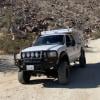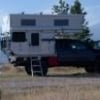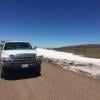Hi Folks,
I am the owner of a Hawk on a Tundra flatbed running Cooper AT3 Load Range E tires. I love the tires. They have been great on the road and in the snow and ice. I am ready to do some offroading with the rig and I would love to hear some psi numbers that I should be airing down to. I know that I can't go too low on the E rated tires but what are folks running in the loose dirt/sand/rock?
Thanks,
Pete
================================================================================
Pete,
You will find a ton of advice on this topic..my 2cents...'05 Tundra AC w/'16 Hawk...same tires as you...last Spring was first trip on new tires...carried 60psi for load [excessive] and to lessen punctures ..Southern Utah/Northern Az...some very deep sand at White Pocket and tons of sharp rock on White Rim Trail...we never aired down; just my preference...loved the tires off road and on highway...
I carry a top of line compressor but have yet to need to air down....given really muddy conditions, perhaps, but so far not needed...we did go with narrow profile [LT235x65x16R] tire to cut into mud/snow rather than float on it...also better to prevent hydroplaning on pavement [higher pressure, deeper tread and slower speed to reduce skating on water]....anyway, just my way and not necessarily the best way! 
Phil
Edited by Wallowa, 20 January 2021 - 12:00 AM.

















